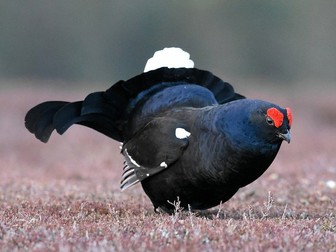Action Countryside-Fighting for black grouse
<p>This package has been produced for a target audience of older pupils or adults. Trials suggest it may also prove a valuable resource for Wildlife Management students or ‘A’ level candidates in Geography and Biology.</p>
<p>Black grouse are birds of edge habitats. They like, in particular, the transition zone between northern forest and moorland heath. In this habitat they can shelter in the forest in the worst winter weather, feed on tree buds in spring and, in summer, they can nest on open ground and forage with their chicks among the grasses and heathland shrubs.</p>
<p>The last estimate of black grouse numbers in Britain was 5,000 displaying males in 2005, with the population centred on a few key upland areas of Scotland, northern England and Wales. Most worrying is that in the late 1990s the black grouse was declining at a rate of some 8-10% per year with a geographical range that was continuing to contract. Dedicated recovery projects throughout the UK aim to restore their numbers and range</p>
<p>This resource includes the GWCT Report, teacher notes and worksheets.</p>
<p>NATIONAL CURRICULUM LINKS:</p>
<p>KS4 Biology: Selective breeding, Ecology - Communities within ecosystems, Communities within ecosystems, Impact of environmental change, Biodiversity, Maintaining Biodiversity, Farming techniques<br />
KS4 Geography: Ecosystems</p>
